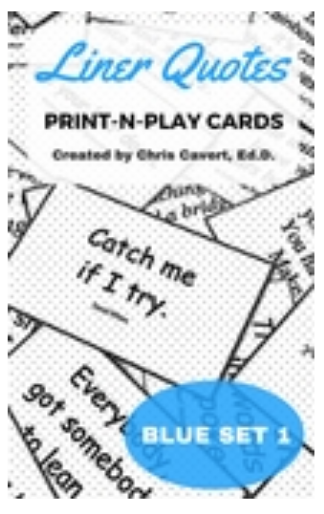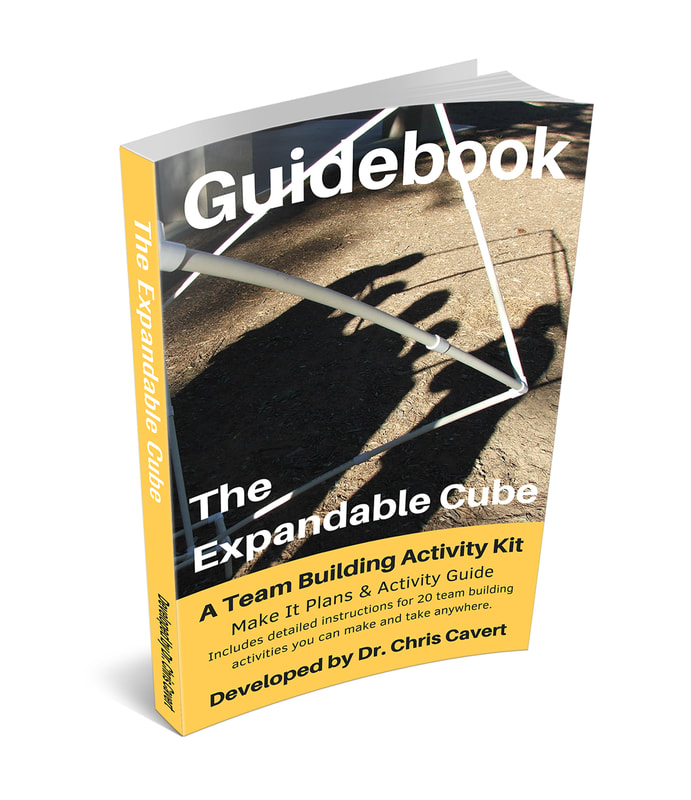
Needs & Numbers: One box of playing cards - any size can work, but we like the big ones. You'll also need a timing device of some sort. Plays well with most ages - the youngest we've tried this with is fourth-graders. (Nine-year-olds are so incredibly creative!) Groups of 2 to 24 participants can play.
Set-Up & Prep: You'll want to set up a square boundary area for this one. Place something at each corner like a game spot, a cone, or a webbing length. The larger the square the more movement. Initially the empty card box will be placed in the center of the square (see Variations for another card box suggestion). Before trying Straight Suits (described below) take out and shuffle each suit of the deck - hearts, diamonds, spades, and clubs. If you are doing one of the other challenges simply shuffle all 52 cards together before play.
Straight Suits (easy challenge):
Divide your group into four smaller sub-groups (you can call them "teams" if working on the mental model of language is part of the group's goals). There should be at least two people in each sub-group (with less than eight people, play one of the challenges below). Put one sub-group at each corner of the square boundary area and give someone in each group a full suit of (13 shuffled) cards - tell all the groups they should not look at the face of the cards until you start the activity. Share the objective before completing the rules.
Objective: On the word "GO!" (time starts). Place down each suit of cards in ascending order off the card box - from Ace to King. The Ace of each suit must be touching the box. The remaining 12 cards of each suit must be in a straight line off the Ace of the same suit. When all (52) cards have been placed down in order, following the required rules, time stops.
With the objective clearly understood (ask for questions if they have them), you will tell each sub-group that after 90-seconds, given for planning, each person in each sub-group must have at least one card in his or her hand (still, not looking at the faces of the cards until the word "GO"). In other words, the person given the 13 cards will deal them out to his/her group-mates. The number of cards each person receives will be determined by the plan established by each sub-group (or, large group if they plan together). Each person must place down the cards he/she was dealt - cards cannot be given away to another player once "GO" is called.
Okay, game on! You can play a few rounds at this level if it proves to be a good challenge for the group. Hopefully times will improve as they get better at the process developed. And, if sub-groups share ideas with each other wouldn't that be cool!
Mixed Up (moderate challenge):
Plays the same as Straight Suits with a different start. Instead of giving each sub-group the same suit of 13 cards, shuffle the entire deck together. Then, while the sub-groups are planning their strategy count 13 cards off the top of the deck and give each group a set of 13 random cards. (If you are team building with only two or three people, deal each person an equal amount of cards.)
As in Straight Suits every player in each sub-group must have at least one card in hand before play can begin. At this level it is pretty obvious that sub-groups (people) will need to communicate with each other (however, I have seen groups just go for it on the first round to see what happens - then they usually plan prior to additional attempts).
Then, play out the objective as described above.
Okay, game on!
Mixed Up In the Dark (difficult challenge):
This one plays the same as Mixed Up but with an un-sighted challenge. When players enter into the square boundary area they must close their eyes until their card(s) is(are) placed down. To exit the square players can have their eyes open (I found this to be safer and it does speed things up a bit). NOTE: So far we've only used this version with smaller groups of 4 to 14 players working on trust-related goals.
Process Improvement: Each of the challenges above can be done several times in order to see how the group improves (or not) based on how long it takes them to accomplish the objective. How process improvement is accomplished is always a good discussion topic.
Variations for All the Levels of Challenge Above:
- If you are planning to stick with one particular level the card box does not have to stay in the middle of the square. While sub-groups are planning you could place the card box somewhere else in the area - the Aces still have to touch the box. This un-planned/expected situation could result in some interesting things to talk about.
- Require that each suit touch a different side of the box. This variation would even be more interesting if you place one side of the card box up against a wall. (Is the top of the box a side?)
- For smaller groups or to make it a bit easier for a group of 12 to 14 players only use three suits and a triangle boundary area.
Let us know how it goes for you. Leave us a comment below.
All the best,
Chris Cavert, Ed.D. (and his AdvEd students)






 RSS Feed
RSS Feed